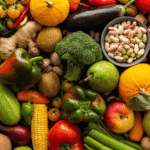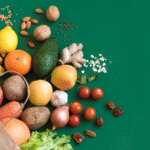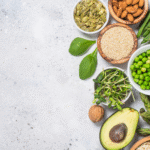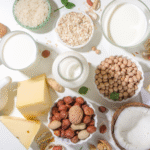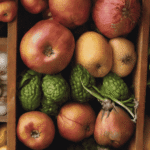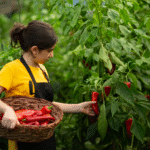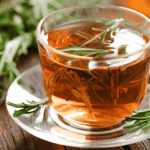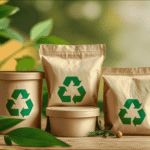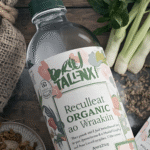Organic products are more popular than ever, with consumers seeking healthier, more sustainable alternatives in food, beverages, skincare, clothing, and even household items. The global organic industry has grown into a multi-billion-dollar market, fueled by rising awareness about chemical exposure, environmental sustainability, and ethical farming practices.
However, this very demand has opened the door for counterfeit and misleadingly labeled products. Many brands use vague terms like “natural,” “green,” or “eco-friendly” to attract conscious buyers — without actually meeting organic certification standards. Some products may contain only a tiny percentage of organic ingredients, while others boldly misuse the word “organic” with no verification at all.
For shoppers, this creates confusion and distrust. People often pay a premium for organic because they expect higher quality, safer ingredients, and eco-friendly farming practices. But when fake organic products flood the shelves, that investment doesn’t deliver the promised benefits.
Learning how to spot these misleading products isn’t just about avoiding disappointment — it’s about:
-
Protecting your health from hidden chemicals and additives.
-
Saving money by investing only in authentic organic goods.
-
Supporting genuine organic farmers and businesses who work hard to maintain ethical and sustainable practices.
In this guide, we’ll uncover the common tricks behind fake organic labeling, the risks they pose, and simple steps you can take to separate the real from the fake every time you shop.
Why Fake Organic Products Are a Problem
The rise of fake or misleadingly labeled organic products isn’t just a minor inconvenience — it’s a growing issue with real-world consequences for consumers, farmers, and the planet. Here’s why it matters:
1. Consumer Deception
Shoppers often pay premium prices for products labeled as “organic” because they trust they are getting something safer and more sustainable. When brands misuse terms like natural, green, or eco-friendly, customers are misled into buying products that don’t actually meet organic standards. This erodes trust in the entire organic industry and makes it harder for consumers to make informed choices.
2. Health Risks
One of the main reasons people choose organic is to avoid exposure to harmful chemicals. Fake products may still contain:
-
Synthetic pesticides
-
Artificial preservatives
-
Harsh detergents or surfactants
-
Chemical fragrances or dyes
Over time, exposure to these substances has been linked to issues like hormone disruption, skin irritation, respiratory problems, and even long-term risks such as cancer. For sensitive groups like children, pregnant women, or people with allergies, these risks can be especially serious.
3. Environmental Harm
Organic farming emphasizes soil health, biodiversity, and chemical-free practices. Counterfeit “organic” products often come from conventional farms that:
-
Use chemical fertilizers and pesticides that pollute water and soil.
-
Destroy biodiversity through monoculture farming.
-
Contribute to climate change via synthetic chemical production and over-farming.
When consumers unknowingly buy these products, they unintentionally support harmful agricultural practices that undo the very goals of the organic movement.
4. Economic Impact
The organic market thrives because consumers are willing to pay more to support ethical farming. When counterfeit or misleading products enter the market:
-
Real organic farmers lose revenue because they can’t compete with artificially low prices.
-
Small certified brands struggle to stand out against larger companies using “greenwashing” tactics.
-
The overall integrity of the organic industry suffers, leading to skepticism from buyers and slower market growth.
5. Loss of Trust in Certifications
Every fake or misleading product that slips through creates doubt about the effectiveness of organic certification systems. If consumers lose faith in the USDA Organic, EU Organic, or other seals, it weakens the global push toward sustainable farming and allows dishonest brands to thrive.
Bottom line: Fake organic products don’t just trick buyers — they endanger health, damage ecosystems, and undermine the livelihoods of genuine organic producers. That’s why spotting them early and supporting authentic brands is critical.
Key Signs of Fake Organic Products
1. Lack of Certification Seals
Authentic organic products usually carry official certification logos like:
-
USDA Organic (United States)
-
EU Organic Leaf Logo (European Union)
-
JAS (Japan Agricultural Standard)
-
IFOAM Accredited Certifications (international)
If a product claims to be organic but lacks a verifiable seal, it’s a red flag.
2. Vague or Misleading Labels
Watch out for terms like:
-
“Made with organic ingredients” (without specifying the percentage).
-
“All-natural” or “eco-friendly” — these are not regulated terms.
-
Overly generic claims like “chemical-free” or “green.”
True organic products provide transparency on ingredient sourcing and percentages.
3. Prices Too Good to Be True
Organic farming is more expensive due to:
-
Smaller yields
-
Labor-intensive practices
-
Certification costs
If the price seems unrealistically low compared to competitors, the product may not be truly organic.
4. Incomplete Ingredient Lists
Fake organic brands often hide full ingredient breakdowns. A genuine product will list all ingredients clearly, often with Latin botanical names for plant sources.
Check for hidden additives like parabens, sulfates, or synthetic fragrances — if they’re present, it’s not organic.
5. No Traceability
Authentic organic products often share details like:
-
Origin of raw materials (e.g., “Sourced from certified farms in California”).
-
Batch numbers for verification.
-
QR codes or online traceability systems.
If you can’t trace the product’s source, be skeptical.
Practical Tips to Avoid Fake Organic Products
Spotting counterfeit or misleadingly labeled organic products isn’t always easy, but with the right knowledge and habits, you can shop with confidence. Here are practical steps every consumer can take:
1. Research the Brand
Authentic organic companies are usually proudly transparent about their sourcing and production practices.
-
Check their website for detailed ingredient breakdowns, sustainability reports, and certifications.
-
See if they share information about their farms, suppliers, or partnerships.
-
Be cautious of vague claims like “eco-friendly” or “100% pure” without evidence.
Pro Tip: Many genuine brands publish annual sustainability or sourcing reports — if you can’t find any, it may be a red flag.
2. Use Certification Databases
Certification seals like USDA Organic, EU Organic, or Soil Association Organic can be verified through official databases.
-
The USDA Organic Integrity Database allows you to check if a brand or farm is genuinely certified.
-
The EU Organic Farming Information System (OFIS) offers similar transparency for European brands.
-
Some countries have local certification bodies — always cross-check if the seal is authentic.
Pro Tip: Counterfeiters sometimes copy organic seals — a quick database search ensures it’s not fake.
3. Shop Trusted Retailers
Large, well-known retailers and specialty organic stores are less likely to carry fake products because they face strict compliance checks.
-
Prioritize certified organic grocery stores, health food stores, and reputable online marketplaces.
-
Be careful when buying from unknown third-party sellers on large platforms where counterfeit goods can slip through.
Pro Tip: When buying online, always check if the seller is the brand’s official store or an authorized distributor.
4. Check Online Reviews & Community Feedback
Fake or misleading products often reveal themselves through inconsistent customer experiences.
-
Look for patterns in reviews: do buyers complain that the product smells synthetic, causes irritation, or doesn’t match organic standards?
-
Visit organic lifestyle forums or communities where users discuss trusted brands.
Pro Tip: Be cautious of products with too many generic 5-star reviews and little detail — this can be a sign of manipulated feedback.
5. Learn Common Organic Logos
Familiarizing yourself with authentic certification seals makes it easier to spot fakes at a glance.
-
Memorize logos like USDA Organic (USA), EU Leaf (Europe), and JAS (Japan).
-
Understand the difference between “100% organic,” “organic” (95% or more organic ingredients), and “made with organic ingredients” (at least 70%).
-
Look closely — fake seals are sometimes blurry, poorly printed, or slightly altered in design.
Pro Tip: Create a quick reference list on your phone with official logos so you can compare while shopping.
6. Pay Attention to Pricing
Real organic farming is more costly due to strict standards, smaller yields, and certification fees.
-
Extremely cheap “organic” products compared to competitors are often suspicious.
-
Authentic organic goods generally fall within a similar price range — too low usually signals cutting corners.
7. Check Packaging & Ingredient Lists
-
Genuine organic products typically include clear, complete ingredient lists (often with Latin plant names).
-
Watch for hidden chemicals like parabens, sulfates, or synthetic dyes.
-
Packaging should look professional and consistent with the brand’s eco-conscious image.
Key takeaway: The best defense against fake organic products is education and vigilance. When in doubt, choose transparency, verify certifications, and support brands that openly share their sustainability practices.
Commonly Faked Categories
While almost any product can misuse the word “organic,” some categories are especially vulnerable because of high demand, limited supply, or difficulty in verifying authenticity. Here are the most commonly faked organic products:
1. Organic Food & Beverages
Certain foods are more prone to fraud due to their global popularity, high value, and complex supply chains.
-
Honey: One of the most frequently faked organic products. Many so-called “organic” honeys are diluted with sugar syrups or sourced from non-certified farms. Some imports are even mixed with conventional honey but sold at premium prices.
-
Olive Oil: Extra-virgin and organic olive oils are expensive to produce, making them a prime target for counterfeiters who dilute them with cheaper vegetable oils.
-
Teas & Coffee: Bulk teas and coffee beans are often mislabeled as “organic” when they are not certified, especially when sold loose or repackaged.
-
Spices: Products like turmeric, saffron, and black pepper are sometimes marketed as organic without certification, or adulterated with fillers.
Why it matters: These foods are consumed daily, so fake products not only waste consumer money but also increase the risk of chemical residue intake.
2. Organic Skincare & Beauty
The clean beauty movement has exploded in recent years, and “organic” has become one of its most powerful marketing terms. Unfortunately, many brands misuse it.
-
Shampoos & Conditioners: Frequently labeled “organic” but still containing sulfates, parabens, or synthetic fragrances.
-
Lotions & Creams: May include only a small percentage of organic plant oils but market themselves as “100% organic.”
-
Perfumes & Deodorants: Some use organic alcohol but still rely heavily on synthetic fragrance oils, misleading customers who think they’re buying chemical-free scents.
Why it matters: The skin absorbs much of what we apply. Using fake organic beauty products may expose users to endocrine disruptors, allergens, and irritants.
3. Organic Supplements
This category is particularly vulnerable because supplements are often poorly regulated compared to food or cosmetics.
-
Herbal Capsules: Many are marketed as organic even if only one ingredient is certified organic, while fillers and binders are not.
-
Protein Powders & Superfood Mixes: High-demand powders like spirulina, wheatgrass, and maca are frequently mislabeled or bulked out with cheaper ingredients.
-
Essential Oils: Often marketed as “organic,” but true organic certification for essential oils is rare and expensive. Many are diluted with synthetic oils but still sold at premium prices.
Why it matters: Supplements are concentrated, meaning any hidden chemicals, pesticides, or fillers can have a stronger impact on health.
4. Organic Textiles (Emerging Concern)
While not as common as food and beauty, textiles like “organic cotton” clothing or bedding are also at risk. Some companies mislabel conventional cotton as organic to charge higher prices, despite it being produced with pesticides and harmful dyes.
Key takeaway: Always be extra cautious with high-demand, high-value products like honey, olive oil, beauty creams, and supplements, since these are the most frequently faked. Check certifications, ingredient lists, and brand transparency before buying.
Conclusion
Spotting fake organic products is not just about being a savvy shopper — it’s about protecting your health, your wallet, and the integrity of the entire organic movement. Counterfeit and misleadingly labeled products thrive on consumer confusion, but with a bit of awareness and careful label-reading, you can avoid falling into their trap.
When you choose products with credible certifications, transparent ingredient lists, fair pricing, and traceable sourcing, you’re making more than just a purchase. You’re casting a vote for an agricultural system that values human health, animal welfare, and environmental sustainability. Every dollar spent on authentic organic goods strengthens the market for real farmers and ethical brands while discouraging dishonest companies from exploiting consumer trust.
The organic label should stand for purity, responsibility, and trust — and it can, if consumers stay vigilant. By learning to recognize the signs of fake organics and committing to informed shopping habits, you not only safeguard yourself but also contribute to a larger movement that is reshaping the future of food, beauty, and wellness.

